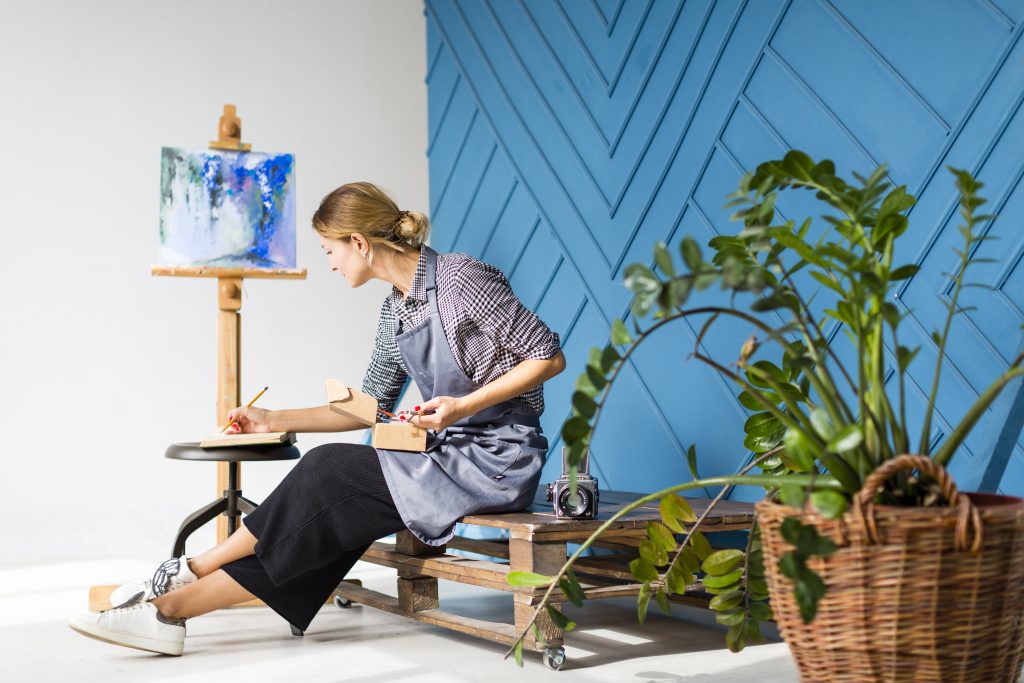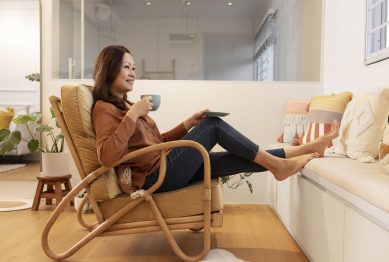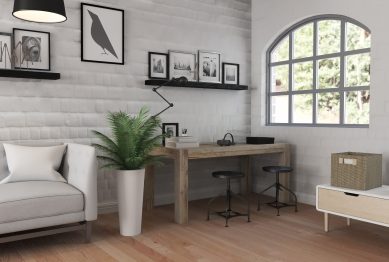In 2025, personalization has become the centerpiece of modern interior design. No longer confined to choosing wall colors or arranging furniture, homeowners and renters are now embracing creative ways to personalize their living space that reflect individuality, sustainability, and technology. From AI-powered design platforms and modular furniture to biophilic elements and DIY customization, personalizing your home has become both accessible and trend-driven.
This article explores emerging trends and practical strategies for anyone looking to add character, comfort, and uniqueness to their home environment.

Why Personalization Matters
Your living space has a profound impact on mental health, productivity, and overall well-being. According to the American Psychological Association (2024), environments that reflect personal identity can reduce stress levels and improve emotional resilience. A cluttered or generic space may feel uninspiring, while a personalized home fosters comfort and a sense of belonging.
In 2025, personalization isn’t just about aesthetics—it’s also about functionality. Hybrid work culture, growing urban populations, and sustainability concerns are pushing people to create adaptable spaces that meet practical needs while showcasing creativity.
1. AI-Powered Interior Design
One of the most exciting emerging trends is the use of artificial intelligence in home design. Platforms such as DecorMatters, Modsy, and AI-powered tools from IKEA now allow users to upload photos of their rooms and receive personalized recommendations.
Benefits of AI Design Tools:
- Generate multiple design layouts based on your taste.
- Visualize how furniture and color palettes will look in your actual space.
- Optimize for natural light and room dimensions.
- Provide budget-friendly alternatives instantly.
By using AI, even small apartments or rented spaces can be transformed into highly personalized environments without requiring professional interior designers.
2. Modular and Multi-Functional Furniture
With urban living spaces shrinking, modular furniture has become a defining personalization trend. Adaptable pieces allow homeowners to adjust layouts depending on the occasion—hosting friends, working remotely, or relaxing alone.
Examples of Modular Furniture:
- Sofas that convert into sectionals or beds.
- Expandable dining tables that double as workstations.
- Stackable shelves and storage cubes for flexible arrangements.
- Wall-mounted desks that fold away to free up space.
These pieces allow individuals to tailor their living space to daily needs, making personalization both functional and stylish.
3. Biophilic Design and Natural Elements
Biophilic design, which incorporates natural elements into living spaces, continues to rise in popularity. Research from the International WELL Building Institute (2023) shows that adding greenery and natural textures to indoor environments reduces stress and enhances focus.
Creative Biophilic Ideas:
- Vertical gardens or plant walls in apartments.
- Natural wood furniture with sustainable certifications.
- Water features like small indoor fountains for tranquility.
- Eco-friendly materials such as bamboo, cork, or reclaimed wood.
These elements don’t just personalize your space—they create healthier and more inspiring environments.
4. Smart Lighting and Ambience
Lighting plays a vital role in shaping mood, and customizable smart lighting has become one of the simplest ways to personalize a space. Brands like Philips Hue and Nanoleaf allow users to adjust brightness, color temperature, and even create themes for different times of the day.
Lighting Personalization Tips:
- Warm lighting for relaxation in living rooms and bedrooms.
- Cool, bright lighting for productivity in workspaces.
- Accent lights to highlight artwork or shelves.
- Voice-activated settings for convenience.
Lighting is no longer just functional—it’s an art form that allows you to express mood and personality.
5. DIY and Upcycled Decor
Sustainability has inspired a DIY renaissance in home personalization. People are turning to upcycling, repurposing, and handcrafted decor to make their spaces unique. According to Statista (2024), over 40% of consumers now prefer buying second-hand or repurposed furniture to reduce environmental impact.
DIY Personalization Ideas:
- Repainting or reupholstering old chairs and sofas.
- Turning vintage suitcases into storage units or side tables.
- Creating wall art from recycled materials.
- Personalizing shelves with handmade pottery or framed photography.
These projects not only personalize your living space but also add stories and character that mass-produced items cannot provide.
6. Art and Statement Pieces
Art remains a timeless way to personalize a home. In 2025, digital and generative art are trending, alongside traditional paintings and photography. Affordable platforms like Saatchi Art and digital NFT galleries have made art more accessible.
Art Personalization Strategies:
- Showcase personal travel photography in custom frames.
- Add digital art displays that rotate works daily.
- Use local artisan pieces to reflect cultural identity.
- Experiment with oversized statement art as focal points.
Choosing art that resonates with you makes your space feel deeply personal.
7. Textiles and Soft Furnishings
Textiles provide texture, comfort, and a chance to experiment with bold personalization without permanent changes. Cushions, rugs, throws, and curtains can transform the tone of a room instantly.
Ideas for Textile Personalization:
- Use bold patterned rugs to define specific zones in open-plan living.
- Layer blankets and cushions in varying textures for warmth.
- Choose curtains that complement wall tones or contrast for drama.
- Rotate textiles seasonally to refresh the space without redesigning.
Small changes in textiles can create big shifts in how personalized and welcoming your home feels.
8. Personalized Smart Home Technology
Smart home systems are no longer about convenience alone—they’re also about personalization. Devices now adapt to user preferences, making daily routines more seamless.
Examples:
- Smart thermostats adjusting temperature to individual comfort levels.
- Voice assistants curating playlists based on mood.
- Customizable smart blinds that respond to sunlight patterns.
- Smart fragrance diffusers that personalize scents by room.
These devices allow your living space to feel uniquely yours, adapting to lifestyle and habits.
9. Cultural and Identity-Based Personalization
Many people are now choosing to personalize their living space by reflecting their heritage, identity, or passions. Whether through cultural artwork, handmade crafts, or items from travels, these touches create deeply meaningful spaces.
Examples include displaying woven textiles from family traditions, curating bookshelves with personal favorites, or incorporating symbolic colors and motifs. Such details create a sense of authenticity and connection.
10. Flexible Spaces for Hybrid Living
Hybrid work and lifestyle changes have blurred the lines between living, working, and socializing spaces. Personalization today often means creating multifunctional zones that can shift roles depending on the time of day.
Flexible Space Ideas:
- A living room corner that doubles as a work zone.
- Foldable partitions to create privacy when needed.
- Convertible guest rooms that function as fitness spaces.
- Outdoor balconies redesigned as relaxation retreats.
Personalizing with flexibility ensures your space supports every aspect of modern living.
Conclusion
Personalizing your home in 2025 is about blending creativity, technology, and sustainability. From AI-powered design platforms and modular furniture to DIY upcycling and cultural touches, creative ways to personalize your living space are more diverse and accessible than ever.
These trends reflect a broader cultural shift toward individuality and well-being. By integrating smart tools, natural elements, and personal storytelling, you can transform your home into a space that not only looks beautiful but also feels uniquely yours.
References
- Can AI Replace Your Interior Designer and Save You Money? https://resources.spacely.ai
- AI Interior Design App to Instantly Decorate & Visualize Your Dream Room, https://decormatters.com
- Anne Hathaway’s ‘warm minimalist’ living room showcases, https://www.homesandgardens.com









